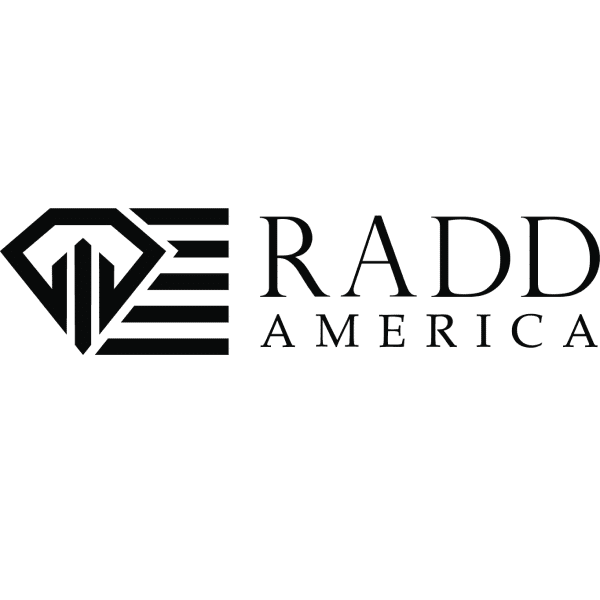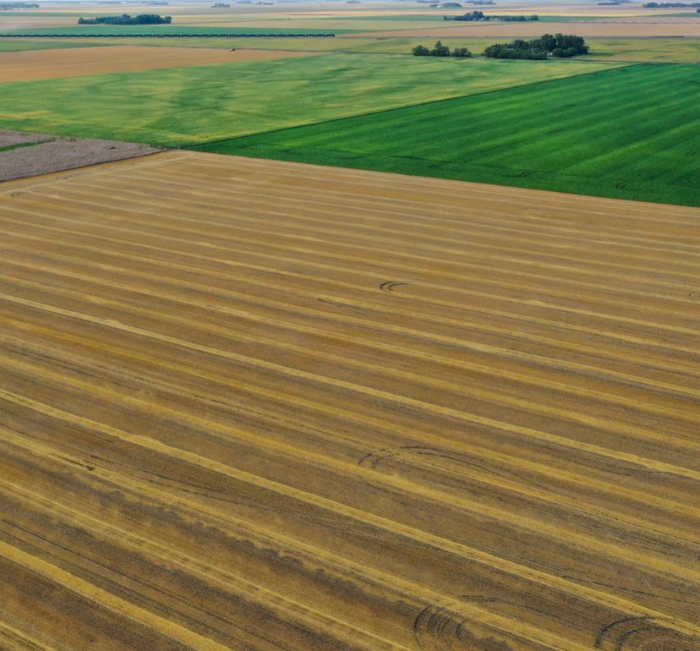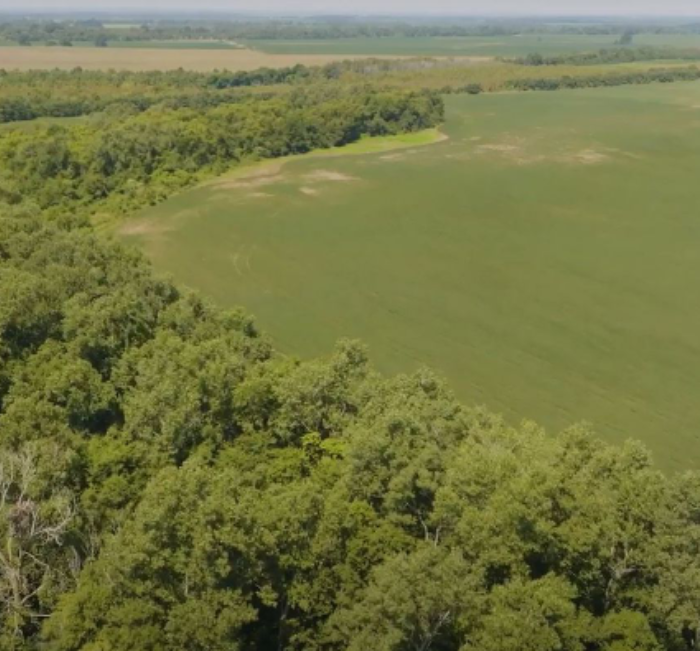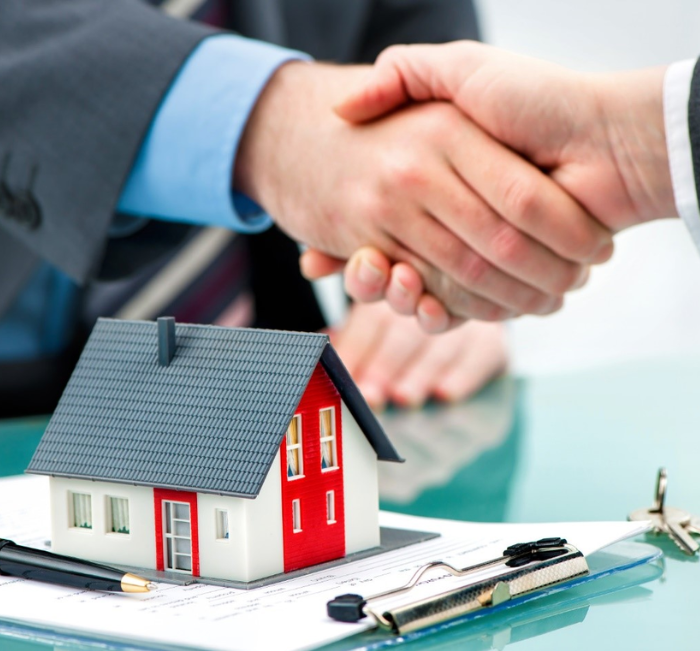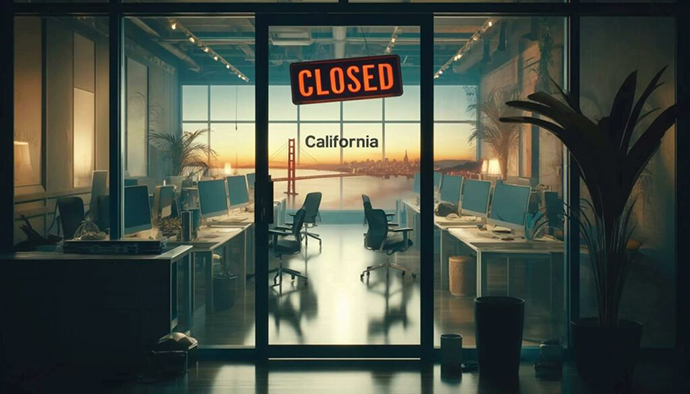Horacio spoke with Artem Milinchuk, the Founder and CEO of FarmTogether. FarmTogether is a fractional investment platform for farmland. Since its inception, FarmTogether has offered fractional ownership across six different states with 12 different crops. Its mission is to continue democratizing investment opportunities in farmland while being an industry leader in sustainable farming.
Discussion topics include
- Getting to know the industry through a Canadian pension fund
- Realizing the farm industry had such few investment opportunities
- The current state and demographics of farmland in the United States
- Creating scalable capital to farmers to meet the challenges of the future
- Developing a farmland fund for financial institutions and retail investors
- Generations of farming families working the land
- California as a powerhouse of agriculture and SIGMA Regulations
- Farmland performing well as an investment and inflation hedge
- Historical barriers to investing in farmland for institutions and retail investors
- Finding favorable long-term trends for crops
You can listen to the podcast through Spotify or YouTube.
[Horacio Ruiz]
Welcome back to the Alts podcast. I’m your host Horacio Ruiz. We bring you industry leaders and creators to give their insights on the rapidly changing and exciting world of alternative assets. Opinion express on this podcast by the host and podcast guests are for informational purposes only and should not be considered investment advice. Podcast hosts and guests may maintain positions in the offerings discussed in this podcast. Our guest today is Artem Milinchuk, Founder and CEO of FarmTogether. FarmTogether is an investment platform for farmland that is made available to accredited investors in the form of fractional ownership or in some cases, entire plots of land. Artem and I talk about the benefits of farmland investing, the challenges that climate change presents and the farmers at the heart of the industry. Artem also talks about some misconceptions about farming and the future he sees playing out in this alternative space. I hope you enjoy my conversation with Artem. Okay. So now on today’s Alt’s podcast, we’re excited to have and to be able to speak to Mr. Artem Milinchuk. He’s the founder and CEO of FarmTogether. Artem thank you for being here today.
[Artem Milinchuk]
Thank you Horacio, excited to be here.
[Horacio Ruiz]
You know Artem farmland is such an interesting asset. It’s very complex as I’ve come to kind of realise as I’m preparing to interview you. And I’m kind of interested in your journey a little bit and why farmland? You created this investment platform and farmland, I don’t think is obvious to anyone, but the more I research it, the more I see the benefits. Could you talk about that?
[Artem Milinchuk]
Yeah, absolutely. So, I started FarmTogether in 2018, but the idea of FarmTogether really came to me back in 2015-16. And so, the Genesis of the story is that at the time I was working for Canadian Pension Fund. And before that for 10 years, I was in finance with a lot of touch points around food and agriculture. So, I knew the space very well, but kind of at a surface level being a bit of a Jack of all trades. And in 2015-16, the alternatives was just emerging. They kind of been around for a while, of course, but mostly for kind of the big institutional investors. And so, what you see right now, this explosion, this almost like a [Cambrian?] explosion of alternative investments is very recent. And back in 15-16, as I was looking for farmland, it just boggled my mind that you had such a huge asset cost due to industry. Almost 10 trillion globally. three plus [inaudible 00:02:44] looking in North America.
So vital to what our very civilisation is. So attractive on a lot of important metrics, such as respiratory uncorrelated, nature performance in times of recessions and inflations. And yet there was very little that individuals and institutions could do to invest in this asset. There was no infrastructure, no intermediaries, no platforms for people to invest in farmland. And just blew my mind, still keeps blowing my mind to this day that such an important industry has so few ways for people to invest in it. And that’s why I started farm together. It was a – honestly a way to just solve my own problem and to solve the problems of peers in the space.
[Horacio Ruiz]
When we talk about farmland and you’ve said it really well, but we kind of understate the value. We’ve read about how farmland is decreasing, the United States still globally, more and more farmland is lost. And in some ways some people said, hey, maybe this is actually a good thing, from what I’ve read. But at the end of the day, you kind of wonder, is that a good thing to lose farmland and to be losing food? What is the current state of farmland is what I’m getting at? And how much more, or how important is it today, as it has been historically when people depended on a farm to eat?
[Artem Milinchuk]
Yeah. So, the state of farmland today, it’s a great question. And I’ll talk about US. So, farming in United States is actually almost all of it is done by families. There’s this big misconception that some sort of large corporations or billionaire’s own farmland, that couldn’t be further away from the truth. Almost all land in US is owned by families. And most farms are small to medium size. 70% of land in US actually farms less than 10 billion dollars, according to our estimates. So, you have this industry that is on the one hand is highly fragmented. And on other hand, it’s also you have an issue where average age of a farmer is approaching 60. And a lot of them are retiring and kids don’t want to become farmers. And so, you have consolidation happening in the industry where farmers that do stay, they more and more run it as kind of this really sophisticated business versus kind of the more, call it, subsistence hobby kind of side farming that happens historically.
And most of land in US by the way is farmland just by acreage. And so, you have this – your huge changes happening the way we farm, and the way farmland is owned. At the same time when you look at sort of the demands that our planet has for farming and for farmers, it’s demand for food that is important, continues to be affordable, but also healthy. It’s how do we farm and how does it affect the environment? The climate change goals we have, quite aggressive and we’re way behind. And farming is one of the few industries that actually can play not only defence by decreasing the carbon emission, but offense, meaning recapture carbon into the soil called region agriculture. Right now, you also have the challenges of how do you transition to more plant-based proteins. That’s a big demand from consumers.
So, there’s so much happening in ag and farmland. And one thing that is really missing is scalable capital to farmers, creative, scalable, cheap capital that allows them to meet these challenges of the future. There’s very little that exists in farmland versus let’s say real estate or stocks. And sort of a lot of other industries, like those financial instruments just don’t exist. That’s the part of the equation we’re in in this global store of agriculture revolution, transition to sustainable agriculture. Yeah, it’s a great question. We can talk about it for hours, but I think I hit on all the main key points that exist in farmland today in the US.
[Horacio Ruiz]
So, I kind of want to use that as a jumping point in a minute, but you’re saying that the – from what I picked up, farmers are aging. The industry’s getting a little bit more sophisticated, and it has a role to play in terms of climate change in terms of sustainability. But you’re saying now that there’s a lack of access to capital for farmers, and I’m wondering where FarmTogether comes into that? Is that a role that you’re seeking to play, or is it something that you’re kind of looking to develop as you’re also fractionalising farmland?
[Artem Milinchuk]
For sure. So, it’s actually what we’re doing right now already, the way FarmTogether works, just as a broad overview on the one hand, either farmers or landowners will come to us, and they’ll be looking for some sort of land-based financing solution. Oftentimes it is sale of land, but in the way that allows them to either retain a marketing contract with the farm, to be able to buy it back – for us, when they see a farm for sale, like the neighbours have to be able to, for us to buy them for them to rent it from us. So, it’s a lot of this kind of flexible capital that we provide to farmers. Now on the investor side, yes, the way it works and the way we get capital is that we buy farm, we will fractionalise it.
And you can invest in one farm or several farms using our FarmTogether portal farmtogether.com and put in as little as $15,000 to invest in that farm. But having said that the – sort of this crowdfunding fractionalised way to syndicate capital is just one of the many channels that we have to bring capital to farmers, is just that one happens to be one of the sort of more interesting and attractive ones to farmers, to us, to investors. But we also have a more traditional farming fund that soon will be going up the platform where you can buy into the diversified portfolio straight away. We have products for institutions, we’re working on the product for small retail investors. So, it’s really, if you think about it, the two problems we’re solving on the farmers side is, hey, we’re looking for something that is more creative capital that doesn’t exist in the market. And the investor side, we say, hey, here’s access to farming as an asset class, packaged and design in a variety of different ways, fitting different investor’s needs.
[Horacio Ruiz]
Yeah. And there’s so many ways that it can go. And I’m seeing that as I’m studying it, because I was wondering what the model was. When you have the offerings on your platform, you have different regions, you have different crops, but then I’m wondering like if you buy land and you buy it bare, a lot of these crops, it takes a lot of these trees, 5, 6, 7 years to even begin to provide a yield, right? Like almonds, right, I take somewhere between six and 12 years I read. And walnuts five to seven years or something like that. So, it’s not like you’re buying the land completely empty, because then it would take you years to even begin to return a profit off of the crop. Where does farm together come in in terms of the acquisition, are you acquiring basically Virgin land and then developing it to plant crops? Or are you acquiring farms that are already ready producing crops?
[Artem Milinchuk]
[Inaudible 00:09:39], we do everything along that spectrum.
[Horacio Ruiz]
Okay. And then when you do acquire some land, you then come in with your resources and I know you have a philosophy, you come in and you bring in your own kind of farm managers and then your technology is that right?
[Artem Milinchuk]
We do bring our farm managers. Oftentimes it’s actually the farmers who are bringing us the opportunity, we’ll stay on as farmers. And they typically – these are not your necessarily kind of the summit farmer’s market farmers. This is a family business. Oftentimes it’s been a business for generations where they are incredibly sophisticated and know much better how to farm the land that they’re bringing to us, or the land that we bring to them to operate. So, our involvement is more so on the reporting side on the oversight, on compliance with the sustainability standard of leading harvest, under which all our farms are right now and updates to investors. So, it’s much more kind of, again, this sort of oversight type role that we play. But of course, we have some amazing people on the farm management team. For example [Boyd Querkins?] recently joined us from Hancock, which is one of the oldest and largest institutional farmland funds in US.
We have decades of experience also working for a company like wonderful pistachios, where he will bring his – of course expertise to the farmers and provide insights that we keep gathering. And we’re getting smarter and smarter on other farms. So, you mentioned we have quite a few almond orchards right now, so we’re starting to learn like, what are the things that work best? What are some things we can do to maybe consolidate, purchasing other type of servicing for our farms? What are the insights we’re learning from operation on this farm, how it applies to other farms? So, as we grow, I think there also will be that operational alpha that we’ll be bringing to investors into the farmers.
[Horacio Ruiz]
Let’s talk a little bit about what you mentioned before in terms of the role that farmland has to play, because we kind of want to get into these heavy topics. So, one thing would be climate change. And I kind of want to approach it from two ways. One is how do you manage farmland that’s in like California, right? Where there’s been drought like conditions for years and years and years. And what role does farm together have and kind of how are you able to sustain farmland on a consistent basis like that? And then secondly is what is the role that future farmland techniques have in improving in maybe like solving the water crisis, if there is something like that?
[Artem Milinchuk]
Yeah, absolutely. So, climate of course is absolutely paramount in farmland investing. And we look at climate resilience of all our deals. So, California is a great example. So, while California always seems to be in the news for things like droughts, what’s important to remember is that California goes through droughts as has been going for centuries. And yes, they going to likely get more severe because of climate change. But having said that there’s still availability of water, and California has been implementing what’s called a Sigma regulation, sustainable groundwater management act that will lead the state hopefully to a more sustainable situation with water. So indeed, we underwrite heavily for water, for climate. It relates to things like chill hours, for example, for almonds, where this – almonds need a certain number of cold time to function properly.
And as it gets warmer, sometimes they don’t get that. And we can project what we think that range of outcomes can be in different areas. And then we stay away from areas where we think that might go away longer term. Because farmland investing is long term investing. Yeah. So, water wise in California, it’s a whole separate topic. But we do spend a lot of time on it and feel very comfortable without underwriting. Important to know that California produces half of whole fruits and vegetables in US. 70% plus of nuts. It’s an ag powerhouse. It has a huge agricultural ecosystem from workers to service providers, to infrastructure. And so, it will continue to be just an absolute powerhouse again of agriculture. And I think it’s important to understand what’s happening, but not to react hastily to what sometimes you see in headlights.
[Horacio Ruiz]
Absolutely. And I know you explained, you see that the future, it still has a bright future. I didn’t know that about California. Is there a risk to being so heavily concentrated in a particular part of the country? And then if there is right, is there something that can kind of be done to offset that risk?
[Artem Milinchuk]
So no, I don’t think there’s any particular heavy risk there. California is huge. And you have a lot of different areas where you grow a lot of different types of produce. Now we do have quite a large presence in states like Oregon, Midwest, Washington. And so of course we diversify there as well. But California just has unique climate for things, again like almonds that’s very hard to find anywhere else. And people wouldn’t be growing almonds there for many, many years now it was that risky. just important with any region to understand the right risks. What are the rewards that you’re expecting? However, people have been eating almonds for thousands of years, and demand only keeps increasing. So yeah, look we have on every deal, what we call a risk reward rating. It’s our proprietary rating we have developed to explain in simple terms to investors, how risky is the investment and the reward corresponding to that level of risk. So, we definitely encourage people to diversify overall. But I just really want to, I guess, say that California is a stable [inaudible 00:15:19] and has been for decades – generations. It will continue to be that and with everything else, climate change will lead to certain regions being better, certain regions being worse. For agriculture, important to remember that as climate change happens, for example, some of areas that previously were not as suitable – for our ones become more suitable. And so, you see that movement from farmers to other states where land is also cheaper. And then in the sense of also the California, what is the situation? What a lot of people don’t realise is that California actually has an abundance of water. It just doesn’t have abundance of water in the right places. So, what’s missing is an irrigation system to bring water to the farms. Because a lot of the water from the mountains, it just runs off into the ocean. Most of it. That’s the challenge.
[Horacio Ruiz]
Wow. Didn’t even think about that. Is that something that might be in the works? Not just FarmTogether, I would imagine, but I guess some sort of infrastructure project, right. For the state?
[Artem Milinchuk]
Yeah. Horacio, I believe that the latest bill, and I’m not sure, I have to check what the situation, whether it’s – but there was in the latest legislation some amount allocated exactly to water projects in California.
[Horacio Ruiz]
Okay. So didn’t know about that. That’s so good. And like I said, the farmland is so multifaceted. You can go in a ton of directions. So, we’re in a state where – or we’re in a point in time where the job market seems like it’s maybe a little bit strong, it’s bouncing back. But there’s other things, right. We have high gas prices. We have inflation through the roof. Things are getting much more expensive. Why would farmland be a compelling investment at this time with the market as it is. And with global affairs being how they are, where it’s a pretty uncertain time. And we’re does farmland fit in for that?
[Artem Milinchuk]
Yeah, absolutely. So, when we look at history, farmland has been one of the best performers in periods of inflation or recession. It’s a very safe and stable asset class. When you think about recessions, recessions are when you stop consuming excessively, right. Where you postpone purchases. Maybe the latest TV. You don’t go on that trip. But what you don’t stop doing is eating. And that’s why, sort of farmland is a very defensible asset class. And as it comes to inflation, well, farmland products are literally hundreds of them. Because it’s not only food, it’s food, fuel, feed fibre. There’s so many things that you see in your everyday life that have actually grown. They’re literally the components of the CPI. And so historically farmland has done tremendously well in periods of inflation. It’s also a real asset as we think about protecting our cash that is rapidly – I mean, if you put inflation at 7%, that means every year you’re losing 7% of your cash. And so, you want to invest in something that is a real asset. And we’ve seen this in single family housing prices going up. We’ve seen this in farming last year. And look, it’s such a complicated situation right now. Like no one knows what’s going to happen. But if we think the next decade is going to be period of high inflation, of subdued growth, of subdued asset returns in the traditional stocks and bonds, then farmland along with some other alternative investments is probably in my view, one of the best investments to add to your portfolio.
[Horacio Ruiz]
And speaking of that, kind of going back, farmland was available to invest by who just institutions in the past, right?
[Artem Milinchuk]
It was a few institutions, but it wasn’t even that. I mean, honestly, even with institutions, it was hard because when you look at what is investable, what is an asset class, it typically means a whole ecosystem infrastructure for capital to be deployed easily. If you and I said, hey, let’s build – create a hedge fund to invest in stocks. Like tomorrow we could deploy 5 billion dollars just like that. In farmland, that never existed. Like for institutions to invest in farmland, they would have to go hire their own team and go and find land for sale, find farmers that wasn’t really age. And even today right, there isn’t really the same level of course institutional, formalised way to participate in asset class. It’s very much you go and just like everyone else tries to buy land.
You have to create contracts with farmers that are not even standardised and how to manage land, how to price it, how to take loan, how to report on it. Investors don’t really understand how farming works. So, it’s really just the – when I say an asset class is emerging like farmland, it’s like everything that you take for granted in investments, in stocks, just most of it doesn’t exist. And so, it was less about how much money you have, although that helps of course, but more just how much expertise you need to invest in it. And what we are doing at FarmTogether is, A, we’re providing that expertise because our team comes from those institutional backgrounds, but B, it’s also building the technology to make that expertise scalable in an asset class that is very fragmented and very opaque.
[Horacio Ruiz]
When you’re saying that it’s scalable. Does that mean that you’re looking to become sort of like a model grower?
[Artem Milinchuk]
I mean more like a model. We want to become a large tech enabled farmland, asset manager, farmland investment platform. That’s what I mean. Because right now with most farms being in-between 5-to-20-million-dollar range, or one to 20, it’s really hard to deploy, and even bring opportunities to investors that really move the needle for farmers and for investors.
[Horacio Ruiz]
As far as the setup or the platform of FarmTogether, right now it’s accredited investors. There’s a minimum investment of $15,000. And I was just thinking – and you mentioned it as well, you’re working on opening it up to retail investors. To me, I feel like that would really open up the asset class. And I mean, I’m sure you have an accredited investors and they have a lot of money to invest, but then once you really open it up to those investors that are looking to put in maybe a couple hundred or even a couple – a thousand dollars, that maybe it changes a little bit. How far away are you from opening up like that?
[Artem Milinchuk]
Yeah. I don’t want to say too much in part of, kind of our business secrets, but we’re working on it.
[Horacio Ruiz]
Yeah, and then can you talk about then, maybe some future projects, and how you go about deciding which crops to grow? That always kind of interested me. I noticed you have a lot of fruits and nuts, hazelnuts, walnut, pecans. How do you go about deciding what to grow and how do you react to the market changing? because I know almonds maybe a couple years ago were big and then they kind of had a steep decline, and it’s all cyclical, but how do you react to the demand in the global food supply?
[Artem Milinchuk]
Yeah, absolutely. So, a few questions there. But to start, farmland being a long-term investment, we really don’t think about short term fluctuations because again these are all crops that people have been eating for centuries, for millennia, and that’s not going to change. So, we look mostly at like, what are the favourable long term transfer crops? And we have identified fruits, vegetables and nuts as parts of the agriculture that have attractive tailwinds. Some other areas like milk, for example, has a lot of headwinds, a lot of substitution from the consumer, over production, over supply. And so, we’re staying away from it for time being. So yeah, we look, we analyse supply and demand. What are the marketing efforts behind every crop? For example, your almonds are so popular because there’s a fantastic almond board in California that just does a tremendous amount of work to market the crop across the world. And then the other question was, what are the new of things that we’re working on? Well, one of the main ones is introducing a secondary liquidity market to investors being able to exit in and out of ideals, which are typically 10, 11 years before that.
[Horacio Ruiz]
Kind of parting questions, Artem. What does the future look like for FarmTogether? And I wonder if there’s anything else maybe that you wanted to talk about quickly about the industry or about your company specifically that we maybe didn’t cover? Because there really is a lot.
[Artem Milinchuk]
For sure. So right now, FarmTogether is just focused on bringing more and better opportunities to our platform, to our investors, to introducing new channels for more investors to participate in the asset class and introducing new financial products for farmers that allows them to meet their goals and meet the goals that the planet has as well for sustainability. I think we covered a lot of topics Horacio, thank you for your time and thank you to the listeners. If you want to check out what we currently have in the latest offerings, go to farmtogether.com. We also have a very friendly and very active client team. So, if you have any questions, you can always email us, and I’ll get back to you typically within 24 hours. Yeah. And I think that’s about it.
[Horacio Ruiz]
Well, that’s great Artem. Thank you so much for being on the podcast. I’m sure that this is going to be highly beneficial and educational for our listeners. And we look forward to keeping in touch.
[Artem Milinchuk]
Thank You.
[Horacio Ruiz]
There are a lot of takeaways from my conversation with Artem. I’m thinking about California, climate change and the systems needed to keep acres and acres of farmland in operation. It’ll be interesting to see how FarmTogether develops its platform, as it increases its scalability and transitions towards working with retail investors. If you enjoy today’s podcast, let others know about it. We find our guests so interesting and knowledgeable, and I know others will too. Or leave a review or hit the follow button. Until the next episode, take care.



